Digitally Augmented Play: Design to Evoke Real-world Imagination for Enriching Digital Play Experience of Children
Research
PhD Dissertation [Download]
#Interactive Toy #Interactive Play Design #Hedonic User Experience #Children #Imagination #Quantative & Qualitative User Research
![]() Dissertation cover designed by Huh Jung
Dissertation cover designed by Huh Jung
Research
PhD Dissertation [Download]
#Interactive Toy #Interactive Play Design #Hedonic User Experience #Children #Imagination #Quantative & Qualitative User Research
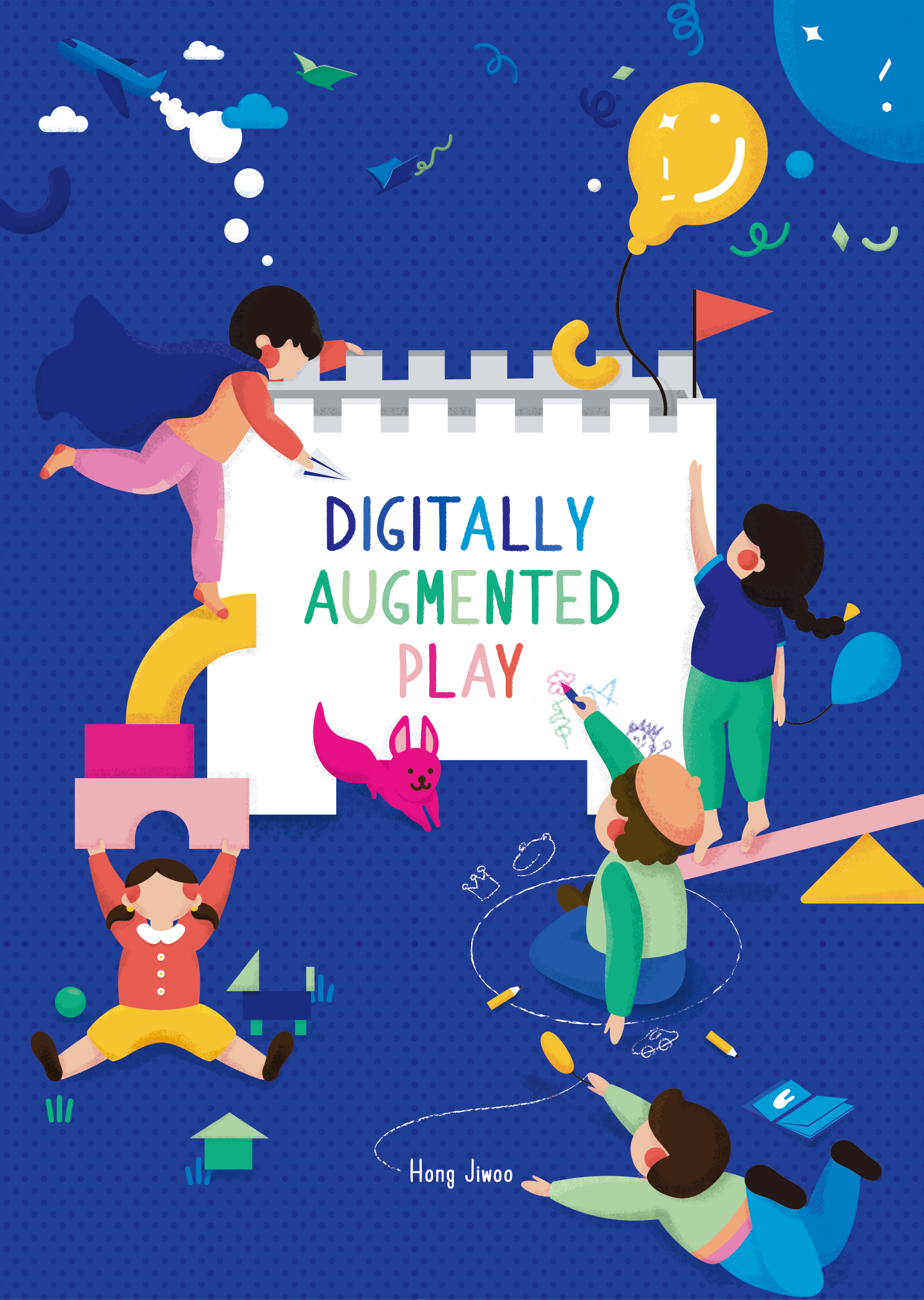 Dissertation cover designed by Huh Jung
Dissertation cover designed by Huh Jung
The recent emergence of digital technology offers new opportunities for children to show a surge of interest and engagement in digital play with the aid of interactive playthings embedded with electronic circuits and computing capabilities. However, the critical challenge, which is still not clear yet, is the need to explore whether and how this new play media can play a productive and positive role in inducing experiential outcomes of children’s play in physical, social, and imaginative aspects.
![]()
To this end, this dissertation put a focus on digital augmentation technology as a means to transparently augment playtime while preserving physical experiences of traditional real-world play and at the same time utilizing advantages of variable digital technology. The dissertation proposed digitally augmented play as a new design approach of digital play and assumed that the approach would provoke children to have real-world imagination and cultivate physical, social, and creative experiences accordingly.
I started by understanding the concept and cases regarding children, play, toys, and technology through the review of precedent works (Chapter 2). Then, I conducted an empirical study by interviewing with parents (Chapter 3) and exploiting experience prototypes to understand how children adopt and use plaything with digital augmentation technology (Chapter 4 [Go to Related Publication Page]).
Based on the findings, I presented several directions, factors, and properties for designing systems in conjunction with digital augmentation technology, which guided me to develop two different prototypical cases (Chapter 5).
The first case was a tabletop system, named ImagiTable, providing audiovisual augmentation on abstract-shaped toys per the selected play modes (Chapter 6 [Go to Related Publication Page]).
Another case, SoundWear, was developed as a wearable toy system with which children can experience on-body sound augmentation by exploring, selecting, generating, and transmitting sounds (Chapter 7 [Go to Related Publication Page]).
The results of user investigation on each case revealed the effect of digitally augmented play on the exhibition of physical, social, and imaginative behaviors.

To this end, this dissertation put a focus on digital augmentation technology as a means to transparently augment playtime while preserving physical experiences of traditional real-world play and at the same time utilizing advantages of variable digital technology. The dissertation proposed digitally augmented play as a new design approach of digital play and assumed that the approach would provoke children to have real-world imagination and cultivate physical, social, and creative experiences accordingly.
I started by understanding the concept and cases regarding children, play, toys, and technology through the review of precedent works (Chapter 2). Then, I conducted an empirical study by interviewing with parents (Chapter 3) and exploiting experience prototypes to understand how children adopt and use plaything with digital augmentation technology (Chapter 4 [Go to Related Publication Page]).
Based on the findings, I presented several directions, factors, and properties for designing systems in conjunction with digital augmentation technology, which guided me to develop two different prototypical cases (Chapter 5).
The first case was a tabletop system, named ImagiTable, providing audiovisual augmentation on abstract-shaped toys per the selected play modes (Chapter 6 [Go to Related Publication Page]).
Another case, SoundWear, was developed as a wearable toy system with which children can experience on-body sound augmentation by exploring, selecting, generating, and transmitting sounds (Chapter 7 [Go to Related Publication Page]).
The results of user investigation on each case revealed the effect of digitally augmented play on the exhibition of physical, social, and imaginative behaviors.
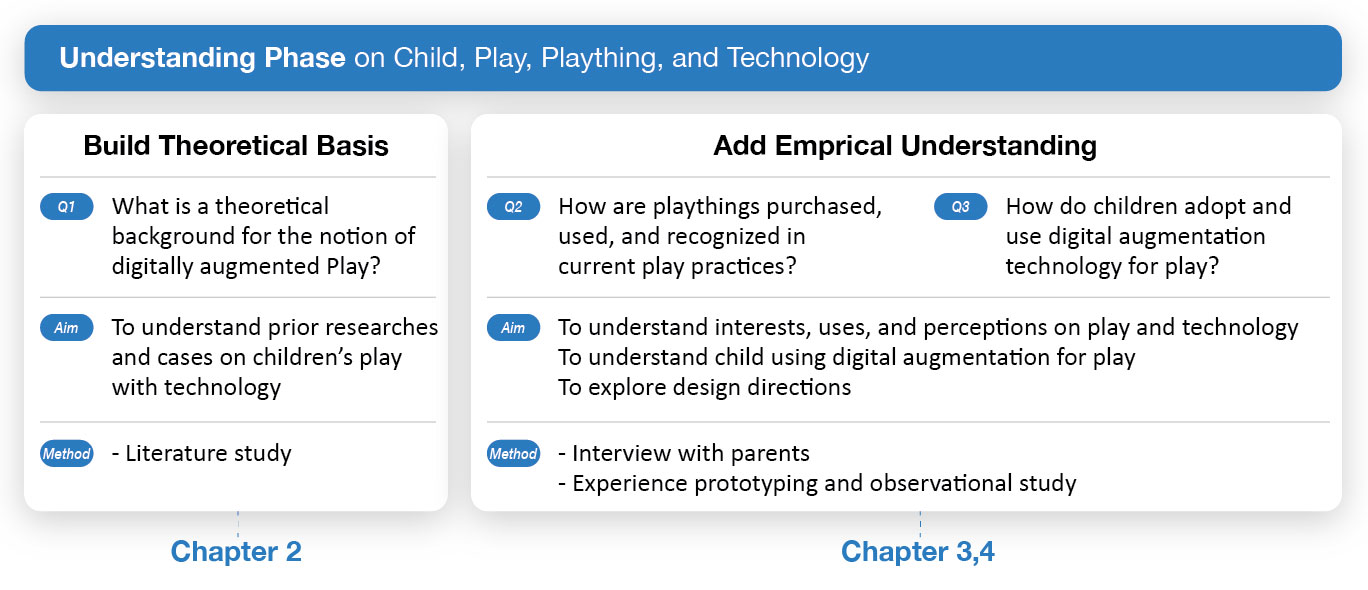
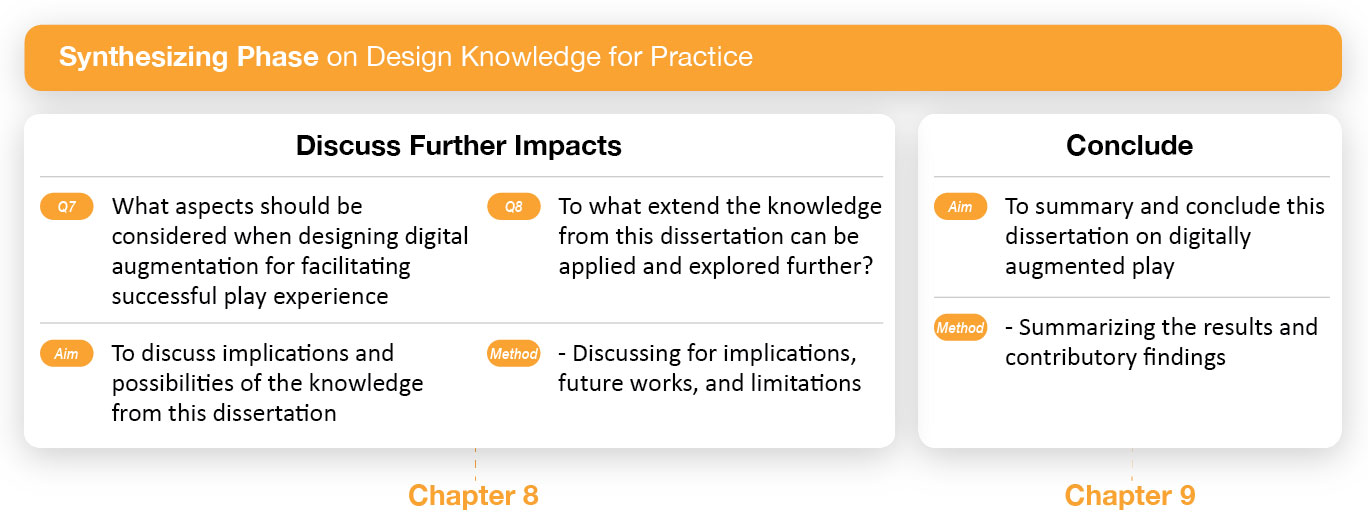

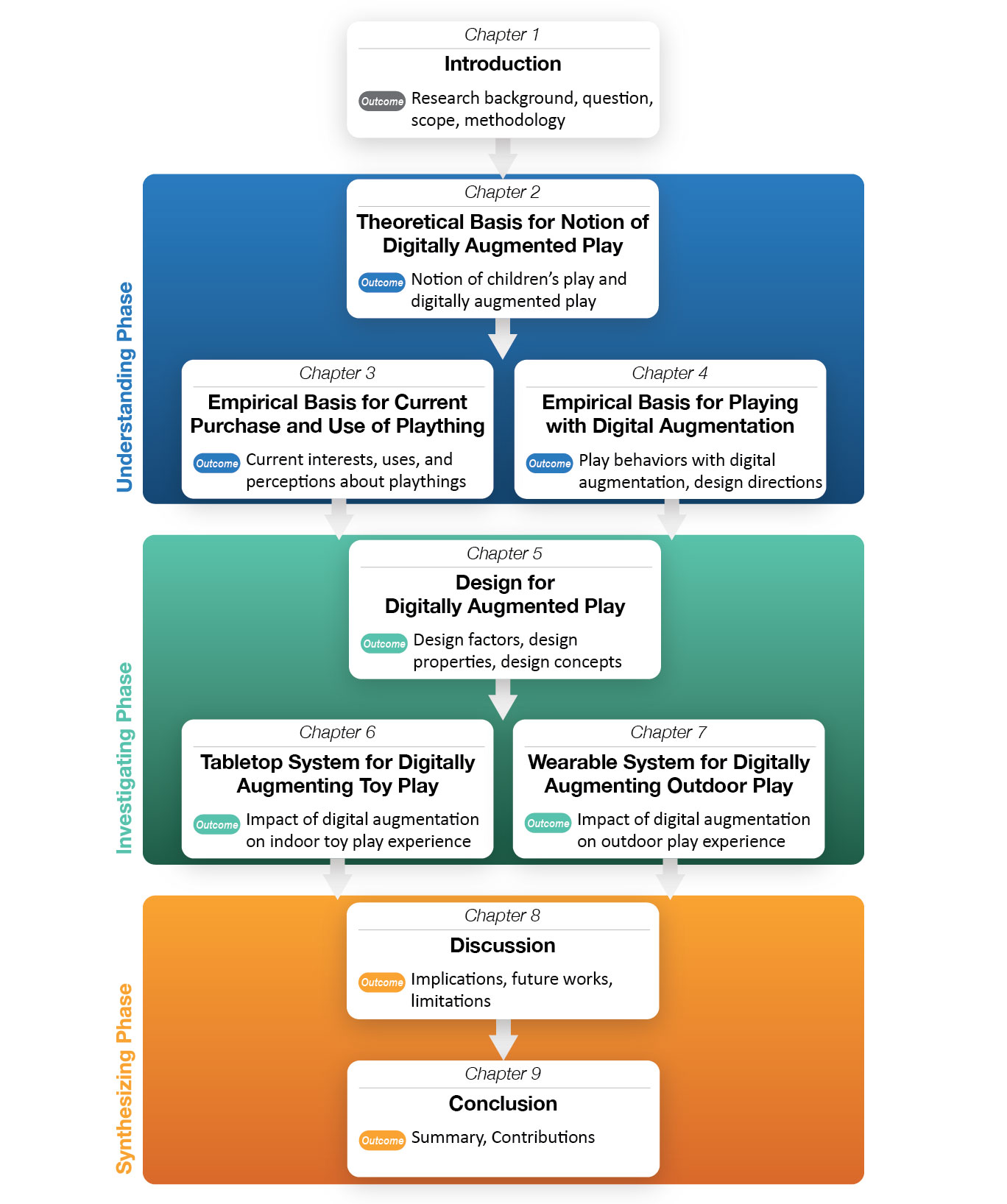 3 major research phases (understanding, investigating, synthesizing) and 9 chapters of this doctoral dissertation
3 major research phases (understanding, investigating, synthesizing) and 9 chapters of this doctoral dissertation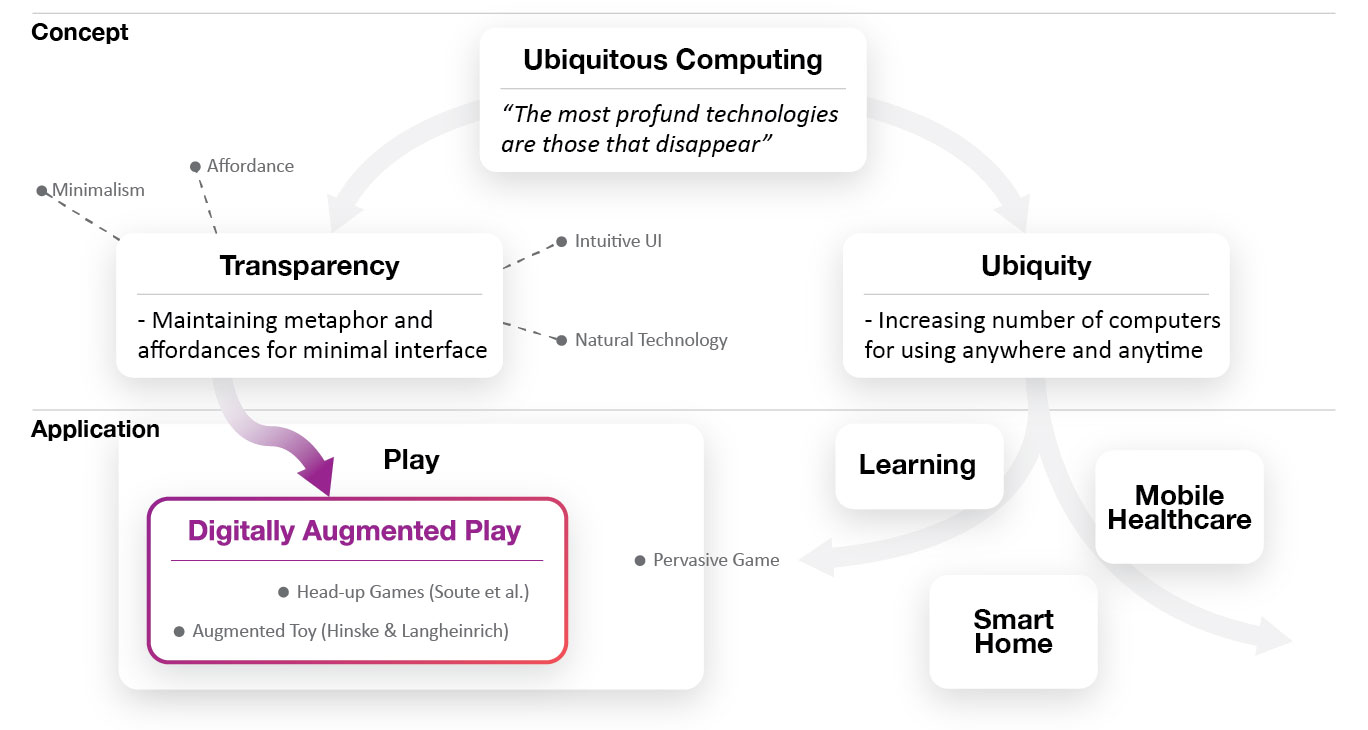
Implication on research: digitally augmented play as transparent technology

Implication on practice: parents, educators, and practitioners
The dissertation concluded by discussing implications and future possibilities of digitally augmented play through a comprehensive analysis of the findings.
The obtained knowledge can help designers and engineers understand what specific design factors need attention while exploiting digital augmentation technology as an intervention for play and games. Furthermore, the verified effect of technology on children’s play informs parents and educators to make more informed decisions when incorporating playful and creative usage of new media to cultivate digital natives’ competencies.